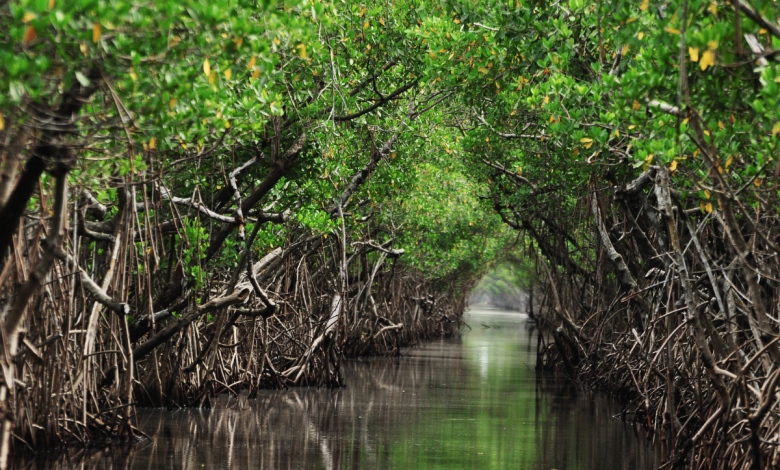Mangroves Aren’t ‘Dead Areas’ – Understanding These Coastal Forests

Mangroves are misunderstood and undervalued ecosystems – often perceived as ‘dirty’ or ‘dead areas’. These myths, however, could never be farther from the truth.
Mangroves shouldn’t be cleared in favour of sandy beaches, luxurious resorts or other developments. They are a remarkably diverse ecosystem working in tandem with different lives.
They are the only trees that thrive in salty waters and improve water quality by filtering out sediments. In addition, more than 1,500 plant and animal species depend on them.
While fish and birds use the shallow waters beneath mangroves as nurseries, larger mammals such as monkeys, hyenas and African wild dogs are also known to rely on them to survive.
These tropical forests also help counter the climate emergency through carbon sequestration, storing on average 1,000 tones of carbon per hectare.
But mangroves are at risk. It’s estimated almost a fifth of them have already disappeared, with coastal development largely blamed for the change.
Five Key Benefits Of Mangrove Ecosystems
1. Shielding Against Extreme Weather Events
As global temperatures rise, extreme weather events are becoming more frequent and intense. Protecting and restoring mangroves and acknowledging their underrated role in limiting the progression of climate change will improve the resilience of coastal communities.
2. Helping Meet Global Climate Targets
The world urgently needs to remove carbon from the atmosphere to meet the set climate targets – and mangroves are here to help. They extract up to five times more carbon than forests on land and allow slower decomposition of organic material.
3. Boosting Food Production
Mangroves are home to honey bees and nurseries for young fish. Restoring the coastal forests could add 60 trillion commercially valuable fish and invertebrates to coastal waters every year, thus enhancing food security as the human population continues to grow.
Also Read: Check How: Africa In A Big Fight Against Climate Change
4. Serving As Critical Habitat For Threatened Species
Of the thousands of species that rely on mangroves, almost 15% are susceptible to extinction. This number is increasing, with trends worsening for most of them. Protecting and restoring the ecosystem is, therefore, necessary to bring back critical habitat for vulnerable animals.



